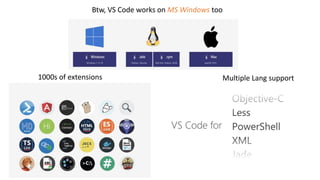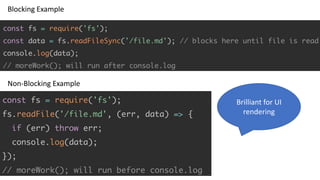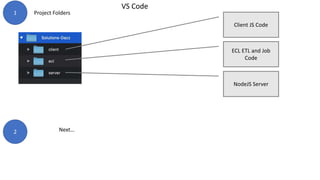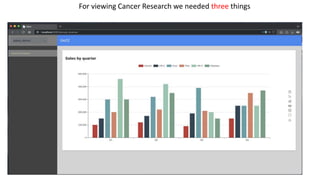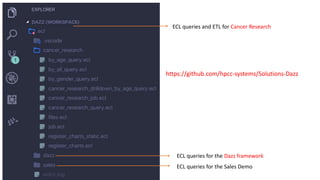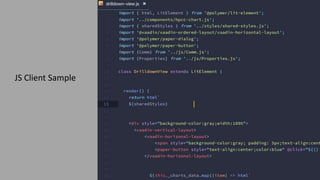Using the Open Source VS Code Editor with the HPCC Systems Platform
- 1. Intro/Abstract Section 1: Why does this matter? Section 3: What are the potential IT security risks? Section 2: How did I use HPCC Systems? Introduction: The concept of self-driving vehicles is one that has fascinated mankind for generations. It was once a topic thought to be so farfetched that it could only exist in a child’s cartoon. Yet, society now finds itself thoroughly entrenched in this new reality. M any enterprises have already taken major strides toward progressing on this once fanciful idea w ith a new sense of validity. Racing closer to that dream, we must pause to consider the potential risks that we may be creating for ourselves. This project focuses on risk analysis regarding autonomous vehicles using HPCC Systems’ big data analytics platform. The central instrument of this research is a dataset composed of over 700,000 individual data points. These points represent simulations of the pertinent information autonomous vehicles will track and log. The columns in this dataset are: vehicle ID, timestamp, x coordinate, y coordinate, and velocity. As a secondary focus of this project, there is an assessment of the potential cybersecurity risks associated w ith this topic. Assuming these new vehicles w ill be connected to the internet and to the infrastructure in the world around them, the question is posed: How w ill these vehicles respond to cyberattacks? Conclusion and Future work Section 1: Why does this matter? Section 1: Why does this matter? Section 1: Why does this matter? Everett M atthew Upchurch Butler | [email protected] Route 1 Risk Factor: 45 Route 2 Risk Factor: 30 There are currently five recognized levels of autonomy in vehicles. The most advanced self driving vehicles available today are level 2. Predictions suggest by 2030, approximately 77% of all vehicles on the road w ith be either lever 3 or 4. Instantaneous Traffic Density Map Enterprise Control Language (ECL) was used to query the dataset and form meaningful conclusions. This show s an example of the code used to query the data. This query returns the number of occasions a specific vehicle was “ speeding” during a given time frame. Solution Architecture Route Choice Risk Calculation Insurers are predicted to face a decrease of 81% in overall personal auto losses by 2050. This equates to approximately $165 Billion lost. Source: KPM G LLP actuarial analysis NHTSA multilayered approach to autonomous vehicle cybersecurity: The average modern vehicle has over 100 M illion electronic units. This creates a vast number of potentially vulnerable areas. Source: The National Highway Traffic Safety Administration Conclusion: It is no longer a matter of if a world with self-driving vehicles is a plausible reality. Experts in both the automotive and insurance industries are already busy trying to understand how this burgeoning technology w ill impact our world in the not-so-distant future. Those who are the pioneers, understand why it is critical to get onto the leading edge of this revolution. Autonomous vehicles are not going away. Our society is changing in a drastic way because of this. Not only w ill these vehicles change our human behavior, they w ill also have lasting financial impacts on our economy, and our standards and expectations for public safety. It is worth noting that the adoption of this technology is not w ithout its risks. As we move forward, we must take care to use good judgement, and be thorough in our preparations. With each new technological revolution, we are exposed to new challenges that we have never before faced. As conscientious and contributing citizens, it is not simply our goal to overcome these challenges, it is our duty and our obligation. The Future of Automotive Telemetry A n A ssessment On Inherent Risk Implications & Cyber-Security Vulnerabilities 1. Prioritized identification process for safety-critical vehicle control systems. 2. Rapid detection and response to vehicle cybersecurity incidents on roads. 3. Architecture and methodologies that build in cyber resiliency. 4. Intelligence and information sharing across the industry.
- 2. Transforming our technology, because standing still is not an option OCTOBER 9, 2018 2018 HPCC Systems Conference Arjuna Chala The Multidimensional Programmer
- 3. Do you code ECL? Do you use JavaScript/HTML? Do you work on OSX or Ubuntu? Do you use Node.js? Build Extensions?
- 4. Welcome to Multidimensional programming Interface – VS Code File/Workspace Explorer Search/Replace Git Run/Debug Manage Extensions ECL Workunit Browser Code Outline Code Editor
- 5. Btw, VS Code works on MS Windows too 1000s of extensions Multiple Lang support
- 6. VS Code is built on the Electron Framework Non blocking architecture enables for fantastic User Interface Responsiveness …….
- 7. Blocking Example Non-Blocking Example Brilliant for UI rendering
- 8. Code a Cancer Research Use Case with VS Code Sample Raw Data – BYAGE.txt Data Source
- 9. Goal is to create something like…. But, with a little more excitement
- 10. Let us begin 1 2 3
- 11. VS Code 1 2 Project Folders Next… Client JS Code ECL ETL and Job Code NodeJS Server
- 13. 1) Data 2) ECL Queries 3) A Dashboard Framework (Dazz) For viewing Cancer Research we needed three things
- 14. After coding for about 10 days …..
- 15. ECL queries and ETL for Cancer Research ECL queries for the Dazz framework ECL queries for the Sales Demo https://github.com/hpcc-systems/Solutions-Dazz
- 16. Client JavaScript dashboard framework based on Google Polymer 3 Node.js server
- 18. ECL Sample
- 19. JS Client Sample
- 20. Server Sample
- 21. Using Dazz you can produce pure ECL code that would create the dashboards
- 22. + The Multi Dimensional Programmer, where nothing is impossible =
- 23. Thank You!!!
Editor's Notes
- #4: Do you do DevOps like programming? Do you build extensions? Do you develop visualizations in HTML and JavaScript? Do you develop server side components that interact with HPCC?
- #6: -Markup development extension for Github -Speallcheck -Linting -Terminal integration -New enhanced Python support -New enhanced Elastic Search Support (more JSON interaction)
- #7: Every rendering is asynchronous from the start to finish The result is a fast user interface response Eliminates wasteful cycles
- #10: Pause here and ask – How many of you think the cancer rates is increasing?
- #12: A directory structure for the application
- #14: Explain what is unique about the Dazz framework





